Aircraft carrier HMS Queen Elizabeth has been declared “trained and safe” to conduct carrier strike operations.
Cdre Steve Moorhouse, Commander of the UK Carrier Strike Group, said in a tweet:
“I was delighted to act as Inspecting Officer for HMS Queen Elizabeth yesterday and declare her READY for the next stage of her Strike Group programme. After an intensive 6 weeks, testing the entire Ship’s Company, she is ready to act as the Flagship at the heart of my Carrier Strike Group.”
⚡BREAKING NEWS⚡
It's a 👍 #SAT@AdmTonyRadakin delegated assessors @FOST have declared we are trained and safe to conduct #CarrierStrike operations.#OST20? Smashed it 👌🏻#SafeguardRuleNoLongerInForce pic.twitter.com/E81XHJrsww
— HMS Queen Elizabeth (@HMSQNLZ) June 18, 2020
The aim of her recent training was to demonstrate that her jets can successfully defend the aircraft carrier by delivering combat air patrols – launching from the ship to conduct strike missions against a target – and being ready to take off at short notice.
This is all part of a journey to enable the carrier, her aircraft and her escorts to deploy operationally next year. Next year, HMS Queen Elizabeth will deploy with two frigates, two destroyers, a nuclear submarine and support vessels.
Commodore Michael Utley, Commander United Kingdom Carrier Strike Group, is reported by Save The Royal Navy here as saying that HMS Queen Elizabeth will be escorted by two Type 45 destroyers, two Type 23 frigates, a nuclear submarine, a Tide-class tanker and RFA Fort Victoria.
The ship will also carry 24 F-35B jets, including US Marine Corps aircraft, in addition to a number of helicopters.
Prior to the deployment, it is understood that the Queen Elizabeth carrier strike group will go through a work-up trial off the west Hebrides range sometime in early 2021.
When asked about whether or not the UK has enough escorts to do this without impacting other commitment, Defence Secretary Ben Wallace said:
“The size and the scale of the escort depends on the deployments and the task that the carrier is involved in. If it is a NATO tasking in the north Atlantic, for example, you would expect an international contribution to those types of taskings, in the same way as we sometimes escort the French carrier or American carriers to make up that.
It is definitely our intention, though, that the carrier strike group will be able to be a wholly UK sovereign deployable group. Now, it is probably not necessary to do that every single time we do it, depending on the tasking, but we want to do that and test doing it. Once we have done that, depending on the deployment, of course, we will cut our cloth as required.”
It is understood that the 2021 deployment will see the Carrier Strike Group sail in the Mediterranean Sea, the Gulf and end up in the Pacific.


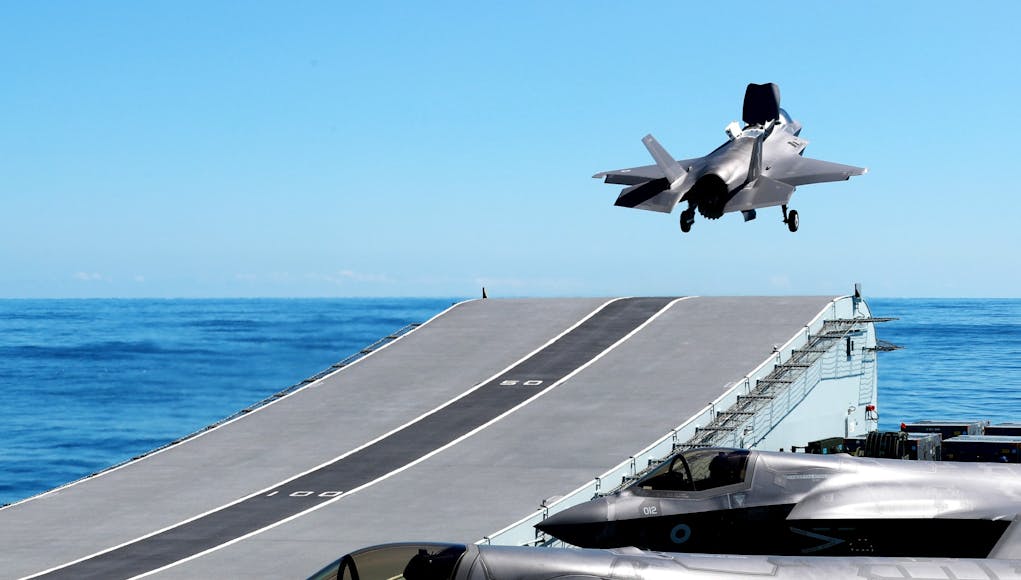
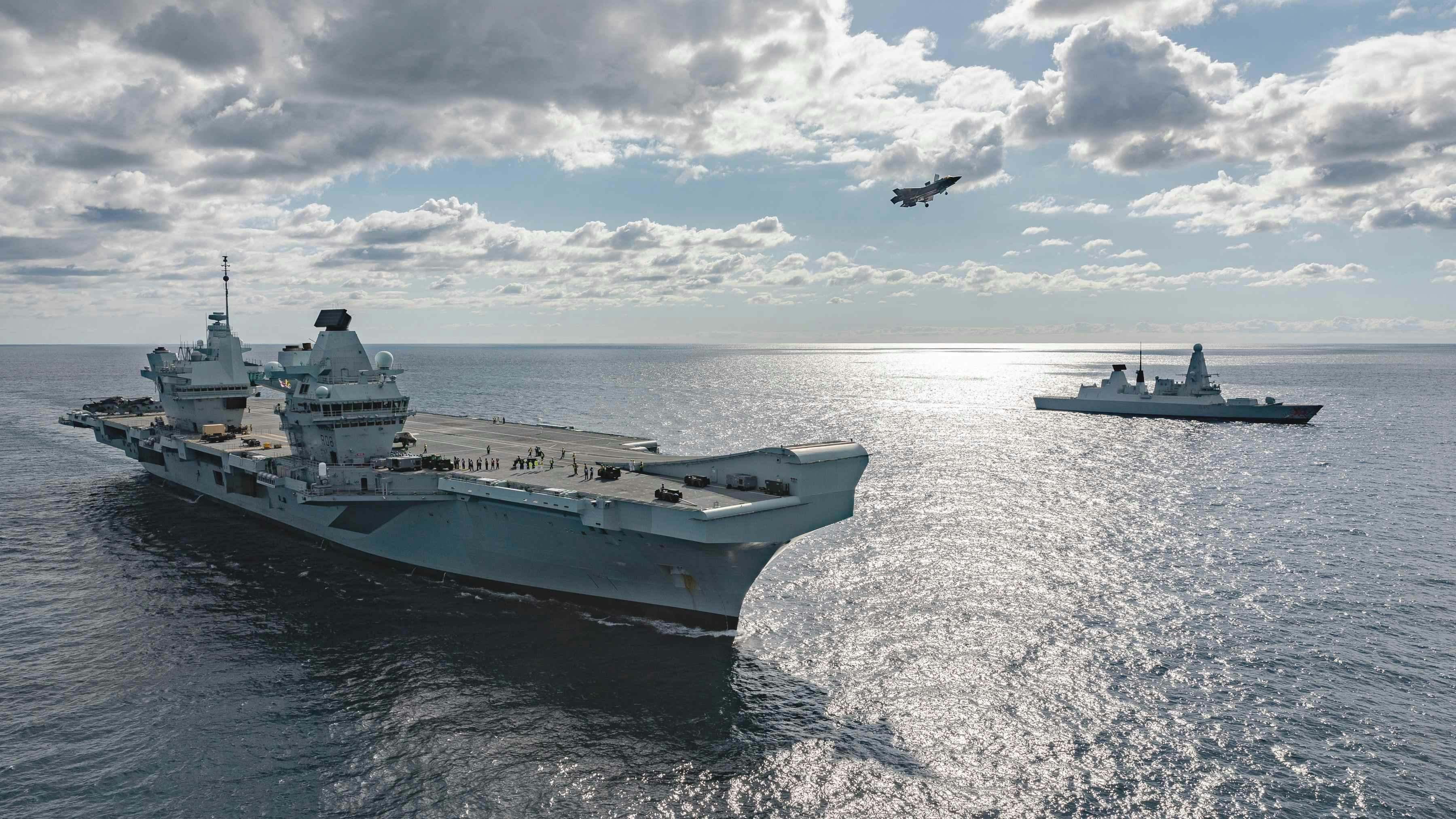
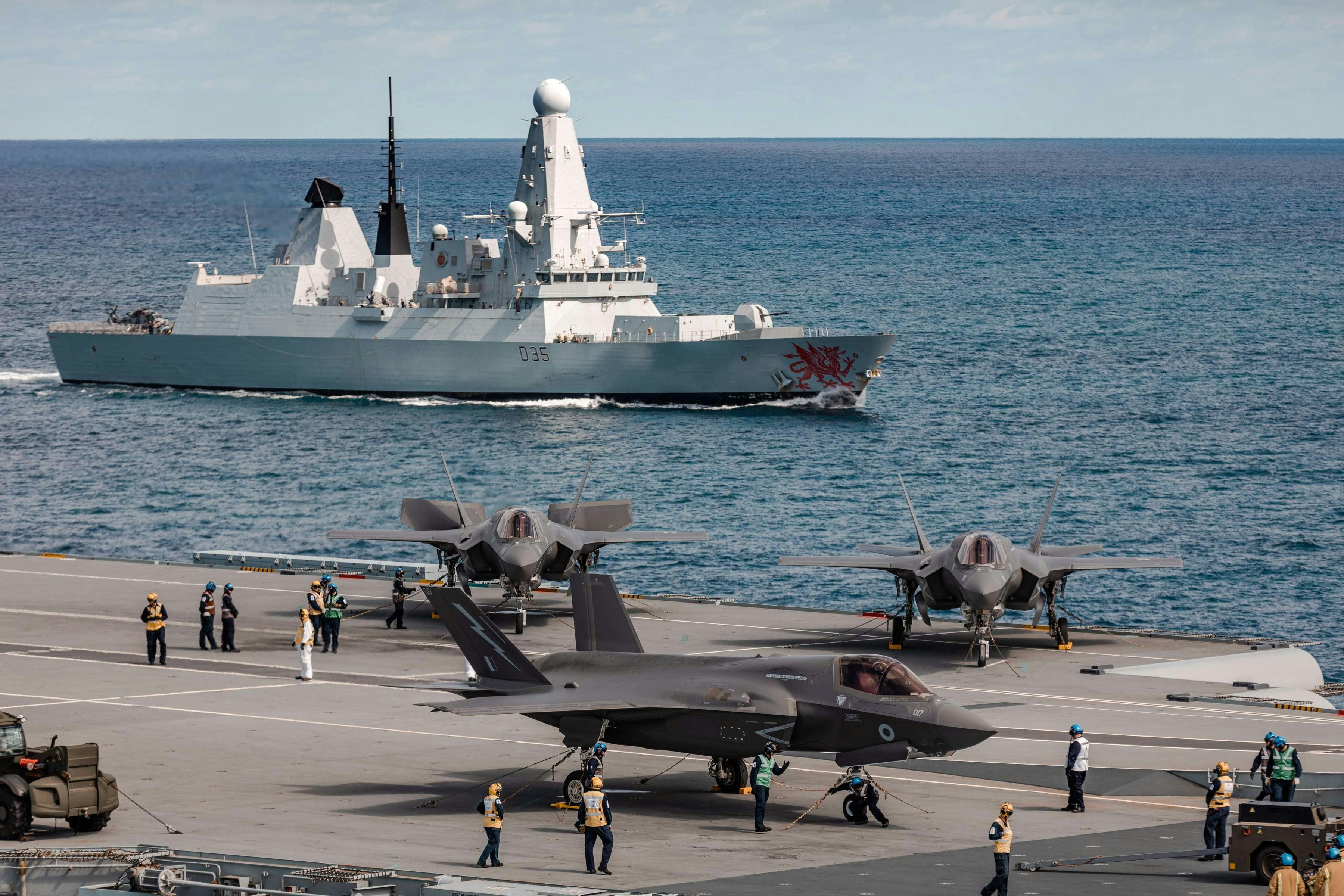
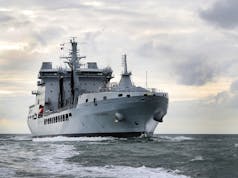
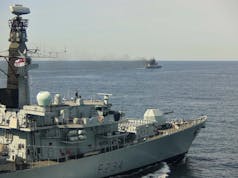
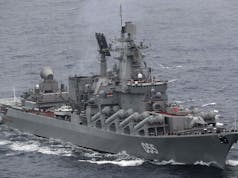
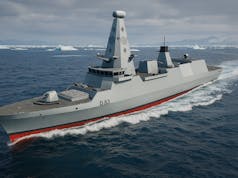

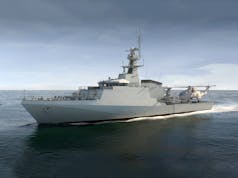

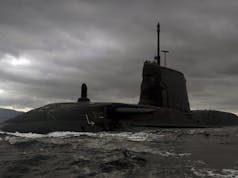
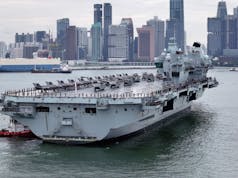
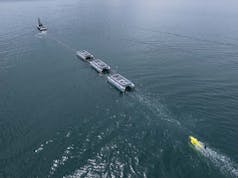

Looking forward to seein a photo of the first UK Carrier Strike Group in decades..
Great news but we need more than 12 F35Bs to be credible. 24 is the minimum to be OK, 30 more like it and 36 should be the target.
You talk as if the UK has stopped ordering them at 12.
We are buying 138, so should have Atleast 70+ operational at one time
70+ not for years, if ever, I suspect. The tiny size of our escort fleet & availability of those we do have is way below what’s needed for our commitments.
Its all great news. But should we be telling everyone where one of our submarines will be. I know most people in the know will easily be able to guess But making them guess is part of a strategy. Especially when you’ve only got six.
US CSGs are known to always have an SSN with them, it’s part of the deterrence of taking one on. I know they have more than we do, but it adds to the implied/direct threat of a strike group to know that there’s one lying in wait somewhere, and also ready to sling cruise missiles 24/7 in any weather.
Very interesting critic of the limitations of the current latest aircraft carriers vs forthcoming operational requirements. It’s a bit of an eye opener really and makes you wonder how effective the QE class can actually be against peer adversaries.
https://www.nationalreview.com/magazine/2020/07/06/the-aircraft-carrier-we-need/#slide-1
Hi T.S
I read most of the article you linked to (i’ll read the rest in the morning 🙂 ) and noticed the performance figures quoted for the combat radius for the UCVS – 1000miles with 4000lbs. The old Blackburn Buccaneer could do 800 miles with 4000lbs internal bomb load flying a high level mission profile.
Now the Buccaneer was a seriously cool looking aeroplane when viewed from directly in front at 200ft! I actually saw one fly right over my head when I was a kid sitting on top of a sand dune near Bamburgh Castle. Saw it twice, once on the way out to sea once on the way back! Still makes me grin even now.
Cheers CR
As you say a really cool aircraft. Rumour had it that it was carved from a solid block of unobtainium. Had a photo from the bridge wing of a Buc passing at low level looking down into the cockpit and it was kicking up a huge rooster tail of spray
I had the good fortune to visit the old Blackburn factory in ’88. They were building Harriers at the time, but had a couple of Buccaneer wing hinges lying on the shop floor. They were huge drop forged STEEL I section lumps about 1m long!
Actually machining wing skins with integral ribs and stringers from solid Ali was a common mode of production before carbon fiber… I saw a nearly complete wing skin heading for the scrap bin because they found a small flaw in the material when it came off the machine!
So carved from solid is pretty close to the truth mate. Not sure about unobtainium 🙂
Cheers CR
Only thing between a Lincolnshire land shark and the ground was a Buccaneer.
Yeah, at 50ft and 450 kts a Bucc would leave a wake on the sea’s surface.
Awesome !
It is certainly an interesting read, although I think it does make a lot of generalisations (not sure how one can avoid that with such a detailed topic, aside from writing a book, to be fair).
I understand the reasoning, basically an extension of the argument that we can’t do amphibious landings any more because of the development of A2AD systems. I would say that it is generally US-centric, and so makes some assumptions about strategic/tactical objectives that may not always be in line with ours.
Their argument is that history is repeating, and that we should be considering the situation directly after WWII, with a need for long range deep strike platforms rather than shorter range tactical strike aircraft. However, that presupposes the situation (as it was back then) that a “total victory” scenario was required in response to an existential threat from a very powerful enemy. I know that China is on the rise, and Russia is again rattling the sabre, but they have decades to go before the are truly in that position. Until then, what do we have to face? The continuing mess of the middle east, Russia’s behaviour in the Black and Baltic Seas, and China’s push into the SCS. All of these are limited conflicts, where the aim would be to blunt/deter regional forces at the edge of the A2AD bubbles described.
Conducting deep strikes into mainland Russia against comand/control hubs is going to escalate the confrontation, whereas rapid tactical strikes specifically against the limited forces involved are our best chance for preventing the attack and defending our allies.
There is also the assumption that, because these missiles have the range, then they’re a sure thing against a carrier. They still need to find a relatively small piece of moving real estate in a large expanse of water, and that is apparently more complicated than many assume. It would certainly be nigh on impossible to sail a CSG into strike range of Shanghai, but more than possible to do the same to one of the outer islands that China has been building.
The question then becomes, what sort of situation are we envisaging when we’re going to be wanting to hit targets deep inside an enemy’s A2AD zone, and will that happen often enough to base our entire (limited) carrier strike capability on it?
Just a few thoughts, not properly put together, and not fully considered the potential of a deep strike UCAV yet (Tempest material, perhaps?). Not completely against the idea they’re putting forward, just not sure where the UK would fit into it…
Great rebuttal joe, agree with what you’ve said.
I think the UK has fallen behind in the development of long range drones recently. I maybe wrong! All seems to gone quiet in that area recently.
…that’s because of stealth!
Great picture of the deck crew with the Union Jacks on his helmet. Kinda rams it home that the RN is back into big carrier ops and how that capability is finally delivered – people. Lots of them!
Nice to see HMS Dragon photo bombing the party 🙂 she’s got to be the most photographed T45 in the fleet. To be honest she is one of the coolest looking of any navy ship with the dragon bow. I hope they keep it!
Cheers CR
Howsit CR! Love the Dragon and its nod to Wales but it does nothing for her camouflage 🙂 Also great to see the Union Jacks in high and low viz on the Deck Crewman’s head although(yes I know-call me a pedant) the little one on his ear is home made. kinda spoils the look. Cheers from cold Durban 9 degrees but warming…
9 degrees, hmm woolley pulley weather..!
I should have added warming to 23 degrees at midday 🙂
I hate to be a pedant, but it’d be good to get a bit of clarity on this statement: “The aim of her recent training was to demonstrate that her jets can successfully defend the aircraft carrier by delivering combat air patrols – launching from the ship to conduct strike missions against a target”; a strike mission is, from my understanding, an attack against a surface target (land or sea), while combat air patrols are geared towards keeping the airspace around the CSG clear of threats. They are to my understanding two different mission sets, but both obviously key.
Which one were HMSQE’s crew practicing this time out, launching to conduct strike missions, or launching and practicing CAP?
Sorry George, I didn’t mean this to come across as a negative- which it does on second reading. I really appreciate the site and content, and the time you put into it. It’s great to have a site that provides UK-centric cross-services information and a forum for discussion.
Hi Joe16,
I took it to mean that they were practicing both, possibly without flying the full strike mission profile.
In other words they send up CAP’s and seperately practiced taking off and landing with a strike warload. This would make sense given the the UK is aiming to use Shipborne Rolling Vertical Landing which is a skill that they need to practice throughly. Also, strike warloads are the heaviest of all so loading and de-loading aircraft is something the deck crews need to practice as often as possible…
Cheers CR
Have we perfected this yet. It is still tricky and needs optics etc to guide in. Is that available.
But you can practice an attack profile from land can’t you, but not a CAP.
I believe the optics have been fitted, not sure.
The first attempt was recorded on the ‘Britain’s Biggest Warship’ in 2018. Took two attempts but was successfully completed. So I suspect they have done a few since.
Prior to that they developed the techique using a very impressive flight simulator. So if they are training line pilots then I suspect they’ll train on the simulator first and then have a go in the best possible flight conditions – hence the training in the summer. All be it a British summer 🙂
Cheers CR
I saw the tv programme. I thought it took several attempts by a test pilot. I’m only guessing how difficult it is or what equipment has been perfected.
cheers
Exciting that we will have this capability again. Really hope this drives the manufacture of more ships and some sort of rotary wing carrier (to allow for one carrier type to be deployed at any one time). But very doubtful any of this will materialise.